Full Name Johanne Hoch Role Artist Nationality German | Name Hannah Hoch | |
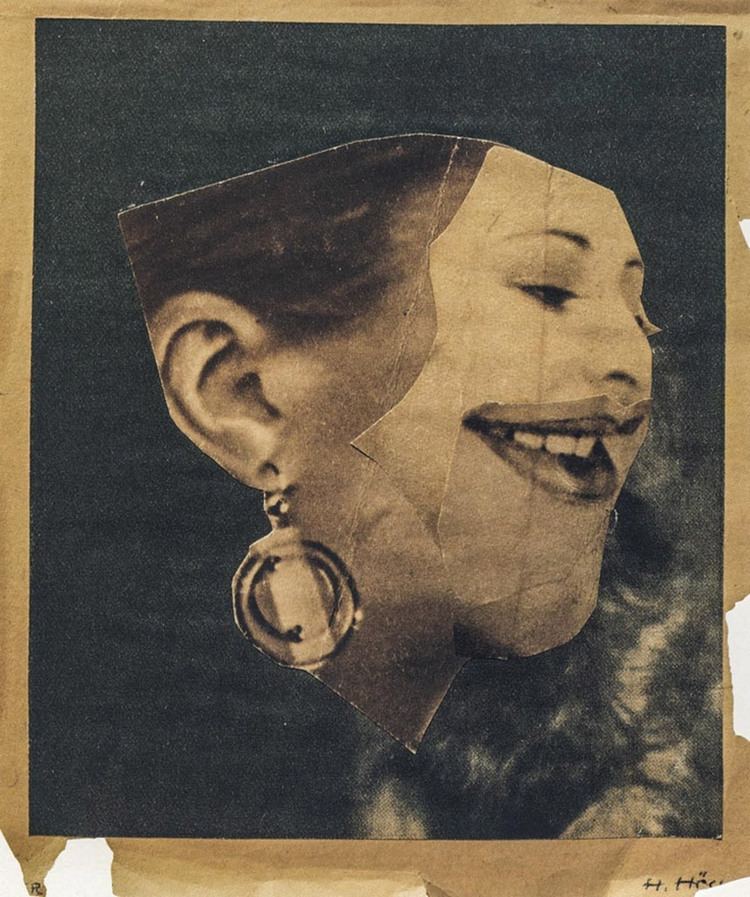 | ||
Died May 31, 1978, Berlin, Germany Artwork Cut with the Kitchen Knife Dada Through the Last Weimar Beer Belly Cultural Epoch of Germany Similar People | ||
Introduction to hannah h ch
Hannah Höch ( [hœç]; November 1, 1889 – May 31, 1978) was a German Dada artist. She is best known for her work of the Weimar period, when she was one of the originators of photomontage. Photomontage, or, fotomontage, is a type of collage in which the pasted items are actual photographs, or photographic reproductions pulled from the press and other widely produced media. Höch's work existed to dismantle the fable and dichotomy that existed in the concept of the “New Woman'': an energetic, professional and androgynous woman, who is ready to take their place as man's equal. Her interest in the topic was how the dichotomy was structured, as well as who structures social roles.
Contents
- Introduction to hannah h ch
- Hannah h ch
- Biography
- Personal life and relationships
- Women In Dada
- Later years
- Works
- Exhibitions
- Selected solo shows
- References
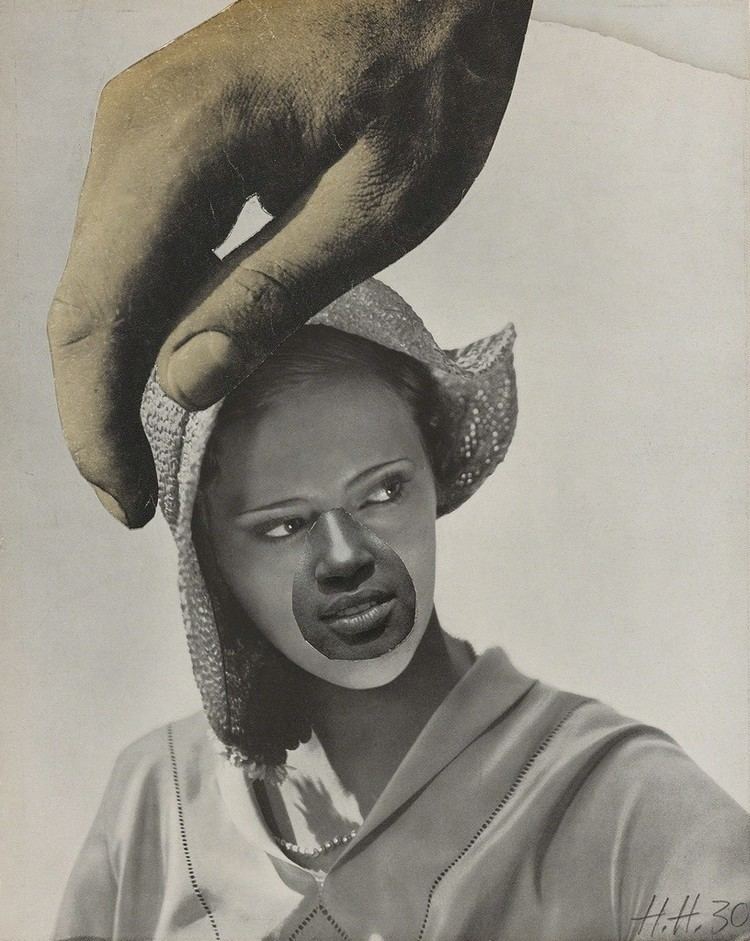
Hannah h ch
Biography
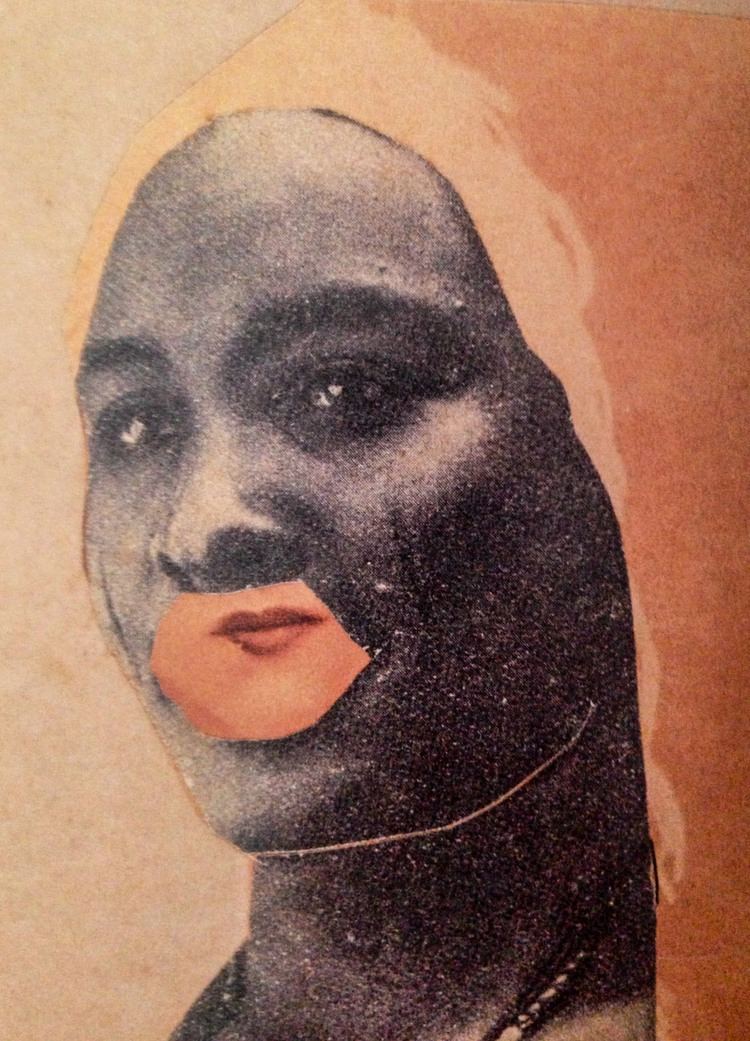
Hannah Höch was born Anna Therese Johanne Höch in Gotha, Germany. Although she went to school, domesticity took precedence in the Höch household in 1904, where Höch was taken out of the Höhere Töchterschule in Gotha to care for her youngest sibling Marianne. In 1912 she began classes at the School of Applied Arts in Berlin under the guidance of glass designer Harold Bergen. She chose the curriculum glass design and graphic arts, rather than fine arts, to please her father. In 1914, at the start of World War I, she left the school and returned home to Gotha to work with the Red Cross. In 1915 she returned to school, entering the graphics class of Emil Orlik at the National Institute of the Museum of Arts and Crafts. Also in 1915, Höch began an influential friendship with Raoul Hausmann, a member of the Berlin Dada movement. Höch's involvement with the Berlin Dadaists began in earnest in 1917. After her schooling, she worked in the handicrafts department for Ullstein Verlag (The Ullstein Press), designing dress and embroidery patterns for Die Dame (The Lady) and Die Praktische Berlinerin (The Practical Berlin Woman). The influence of this early work and training can be seen in her later work involving references to dress patterns and textiles. From 1926 to 1929 she lived and worked in the Netherlands. Höch made many influential friendships over the years, with Kurt Schwitters and Piet Mondrian among others. Höch, along with Hausmann, was one of the first pioneers of the art form that would come to be known as photomontage.
Personal life and relationships
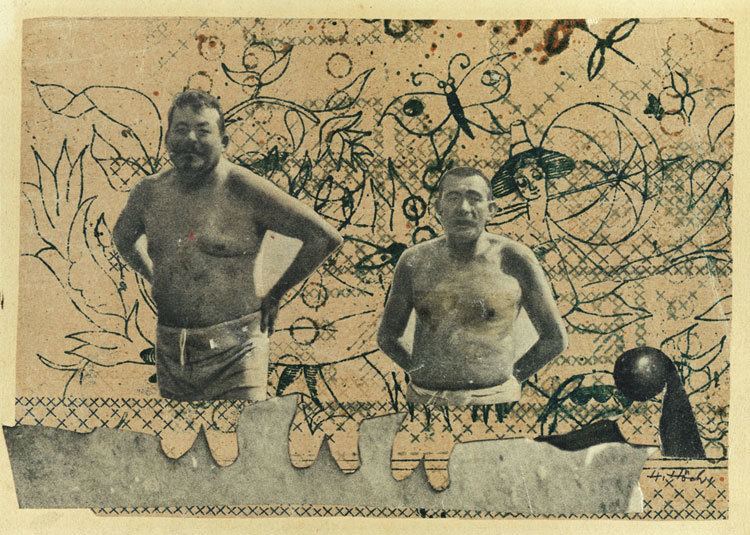
Art historian Maria Makela has characterized Höch's affair with Raoul Hausmann as "stormy", and identifies the central cause of their altercations—some of which ended in violence—in Hausmann's refusal to leave his wife. Hausmann continually disparaged Höch not only for her desire to marry him, which he described as a "bourgeois" inclination, but also for her opinions on art. Hausmann's hypocritical stance on women's emancipation spurred Höch to write "a caustic short story" entitled "The Painter" in 1920, the subject of which is "an artist who is thrown into an intense spiritual crisis when his wife asks him to do the dishes."
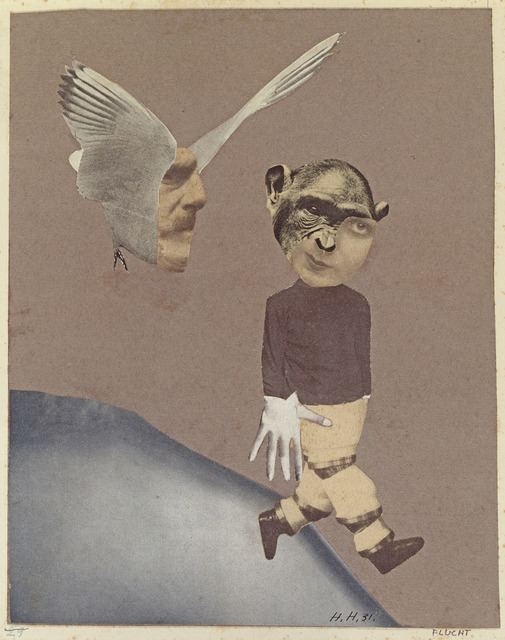
Höch left her seven-year relationship with Raoul Hausmann in 1922. In 1926, she began a relationship with the Dutch writer and linguist Mathilda ('Til') Brugman, whom Höch met through mutual friends Kurt and Helma Schwitters. By autumn of 1926, Höch moved to Hague to live with Brugman, where they lived until 1929, at which time they moved to Berlin. Höch and Brugman's relationship lasted nine years, until 1935. They did not explicitly define their relationship as lesbian (likely because they did not feel it necessary or desirable), instead choosing to refer to it as a private love relationship. In 1935, Höch began a relationship with Kurt Matthies, whom she was married to from 1938 to 1944.
Women In Dada
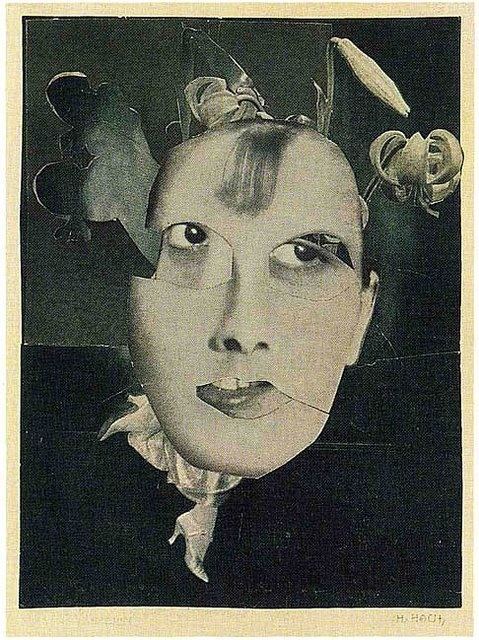
While the Dadaists, including Georg Schrimpf, Franz Jung, and Johannes Baader, "paid lip service to women's emancipation," they were clearly reluctant to include a woman among their ranks. Hans Richter described Höch's contribution to the Dada movement as the "sandwiches, beer and coffee she managed somehow to conjure up despite the shortage of money." Raoul Hausmann even suggested that Höch get a job to support him financially. Höch was the lone woman among the Berlin Dada group, although Sophie Täuber, Beatrice Wood, and Baroness Else von Freytag-Loringhoven were also important, if overlooked, Dada figures. Höch references the hypocrisy of the Berlin Dada group and German society as a whole in her photomontage, Da-Dandy. Höch also wrote about the hypocrisy of men in the Dada movement in her short essay "The Painter", published in 1920
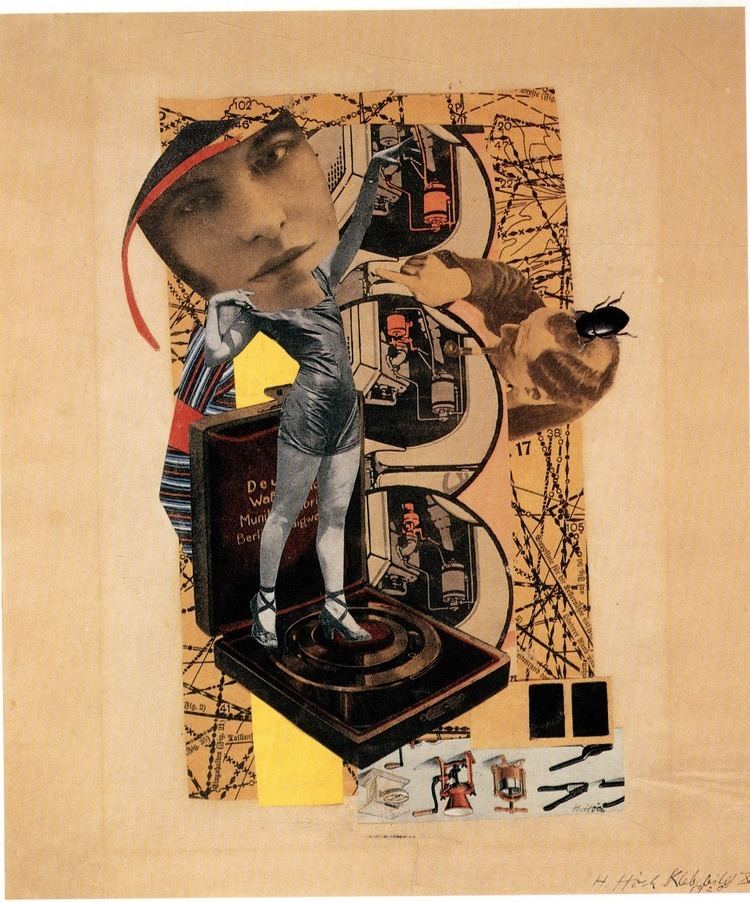
Höch's time at Verlang working with magazines targeted to women made her acutely aware of the difference between women in media and reality, even as the workplace provided her with many of the images that served as raw material for her own work. She was also critical of marriage, often depicting brides as mannequins and children, reflecting the socially pervasive idea of women as incomplete people with little control over their lives. Höch considered herself a part of the women's movement in the 1920s, as shown in her depiction of herself in Schnitt mit dem Küchenmesser DADA durch die letzte weimarer Bierbauchkulturepoche Deutschlands (1919–20). Her pieces also commonly combine male and female traits into one unified being. During the era of the Weimar Republic, "mannish women were both celebrated and castigated for breaking down traditional gender roles." In this artwork Hoch metaphorically equates her scissors, used to cut images or her collages, to the kitchen knife. This is used to symbolize cutting through the dominant domains of politics and public life in Weimer culture. Her androgynous characters may also have been related to her bisexuality and attraction to masculinity in women (that is, attraction to the female form paired with stereotypically masculine characteristics).
Later years
Höch spent the years of the Third Reich in Berlin, Germany, keeping a low profile. She lived in Berlin-Heiligensee, a remote area on the outskirts of Berlin, hiding in a small garden house. She married businessman and pianist Kurt Matthies in 1938 and divorced him in 1944. She suffered from the Nazi's censorship of art, and her work was deemed "degenerate art" making it even more difficult to show her works. Though her work was not acclaimed after the war as it had been before the rise of the Third Reich, she continued to produce her photomontages and exhibit them internationally until her death in 1978, in Berlin.
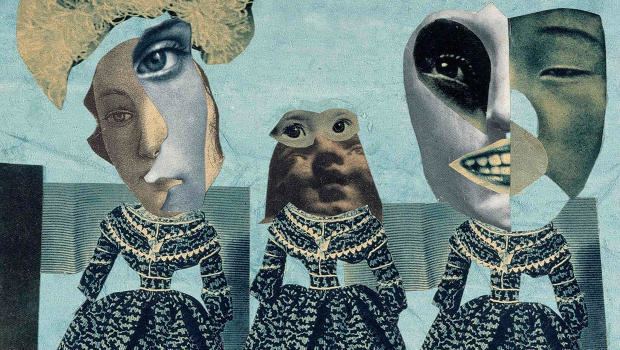
Her house and garden can be visited at the annual Day of the Memorial (Tag des offenen Denkmals).
Works
Höch was a pioneer of the art form that became known as photomontage. Many of her pieces sardonically critiqued the mass culture beauty industry at the time, gaining significant momentum in mass media through the rise of fashion and advertising photography. Many of her political works from the Dada period equated women's liberation with social and political revolution. Her work displays the chaos and combustion of Berlin's visual culture from the female perspective. In particular, her photomontages often critically addressed the Weimar New Woman, collating images from contemporary magazines. Her works from 1926 to 1935 often depicted same sex couples, and women were once again a central theme in her work from 1963 to 1973. Her most often used technique was to fuse together male and female bodies. This fusion existed in order to give the attributed power of a man to a woman, as well as blur the lines of gender attributed actions. Höch also made strong statements on racial discrimination. Her most famous piece is Schnitt mit dem Küchenmesser DADA durch die letzte weimarer Bierbauchkulturepoche Deutschlands ("Cut with the Dada Kitchen Knife through the Last Weimar Beer-Belly Cultural Epoch in Germany"), a critique of Weimar Germany in 1919. This piece combines images from newspapers of the time mixed and re-created to make a new statement about life and art in the Dada movement. From an Ethnographic Museum (1929), one of Höch's most ambitious and highly political projects, is composed of twenty photomontages that depict images of European female bodies with images of African male bodies and masks from museum catalogues, creating collages that offer "the visual culture of two vastly separate civilizations as interchangeable—the modish European flapper loses none of her stylishness in immediate proximity to African tribal objects; likewise, the non-Western artifact is able to signify in some fundamental sense as ritual object despite its conflation with patently European features." Hoch created Dada Puppens (Dada Dolls) 1916. These dolls were influenced by Hugo Ball, the Zurich-based founder of Dada. The doll's costumes resembled the geometric forms of Ball's own costumes worn in seminal Dada performances.
Exhibitions
Höch's work has been exhibited internationally in solo and group exhibitions.
The Whitechapel Gallery in London presented a major exhibition of Höch's work from 15 January – 23 March 2014. This exhibition was composed of over one hundred works from international collections that Höch created from the 1910s to 1970s. Highlights included Staatshäupter (Heads of State) (1918–20), Hochfinanz (High Finance) (1923), Flucht (Flight) (1931), and many works from the series From an Ethnographic Museum.
